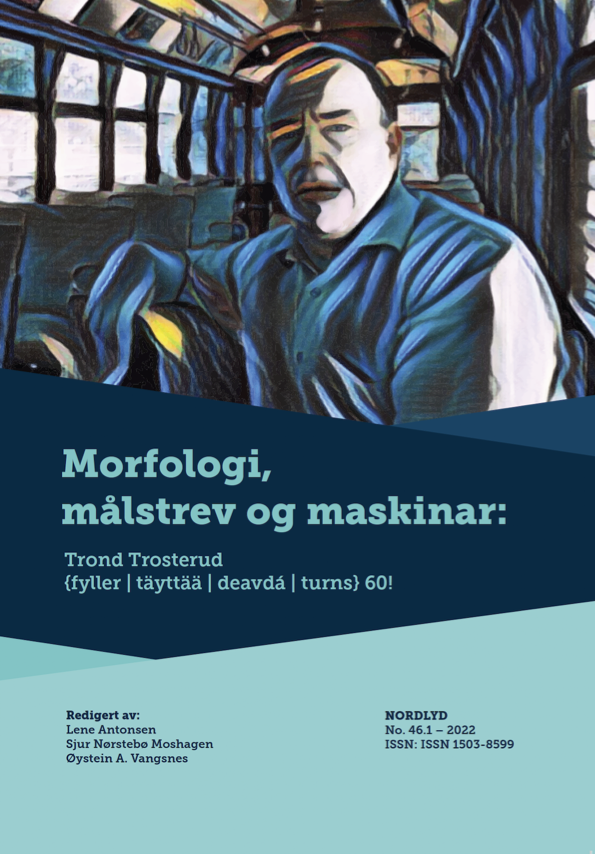Cyclic feeding interactions between finite-state mal-rules
An algorithm for the optimal grouping and ordering of mal-rules
DOI:
https://doi.org/10.7557/12.6306Keywords:
learner errors, mal-rules, Russian, rule ordering, finite-state transducerAbstract
Intelligent Language Tutoring Systems typically attempt to automatically diagnose learner errors in order to provide individualized feedback. One common approach is the use of mal-rules to extend normative grammars by licensing specific types of learner errors. In finite-state morphologies, mal-rules can be implemented as two-level rules or replace rules. However, unlike the phonological rules of natural languages, mal-rules do not necessarily behave as a coherent system, especially with respect to feeding interactions. Using examples from learner errors attested in the RULEC corpus of Russian learner texts, we illustrate the problem of cyclic feeding interactions that can occur between mal-rules. We then describe a formal algorithm for identifying an optimal ordering for mal-rules to be applied to a transducer.
References
Amaral, Luiz and Detmar Meurers. 2011. On using intelligent computer-assisted language learning in real-life foreign language teaching and learning. ReCALL 23 1: 4–24. https://doi.org/10.1017/S0958344010000261.
Antonsen, Lene. 2012. Improving feedback on l2 misspellings-an fst approach. In Proceedings of the SLTC 2012 workshop on NLP for CALL; Lund; 25th October; 2012, 080, pp. 1–10. Linköping University Electronic Press.
Choi, Inn-Chull. 2016. Efficacy of an ICALL tutoring system and process-oriented corrective feedback. Computer Assisted Language Learning 29 2: 334–364. https://doi.org/10.1080/09588221.2014.960941.
Chomsky, Noam and Morris Halle. 1968. The sound pattern of English. Harper & Row.
Chomsky, Noam, Morris Halle, and Fred Lukoff. 1956. On accent and juncture in english. For Roman Jakobson 65: 80.
Ellson, John, Emden Gansner, Lefteris Koutsofios, Stephen C. North, and Gordon Woodhull. 2002. Graphviz— open source graph drawing tools. In Graph Drawing, edited by Petra Mutzel, Michael Jünger, and Sebastian Leipert, pp. 483–484. Springer Berlin Heidelberg, Berlin, Heidelberg. https://doi.org/10.1007/3-540-45848-4_57.
Gansner, E.R., E. Koutsofios, S.C. North, and K.-P. Vo. 1993. A technique for drawing directed graphs. IEEE Transactions on Software Engineering 19 3: 214–230. https://doi.org/10.1109/32.221135.
Hagberg, Aric, Pieter Swart, and Daniel S Chult. 2008. Exploring network structure, dynamics, and function using networkx. Tech. rep., Los Alamos National Lab.(LANL), Los Alamos, NM (United States).
Heift, Trude. 2010. Developing an intelligent language tutor. CALICO Journal 27 3: 443–459. https://doi.org/10.1558/cj.27.3.443-459.
Johnson, Donald B. 1975. Finding all the elementary circuits of a directed graph. SIAM Journal on Computing 4 1: 77–84.
Karttunen, Lauri. 1993. Finite-state constraints. The last phonological rule 6: 173–194.
Kiparsky, Paul. 1968. Linguistic universals and linguistic change. In Universals in linguistic theory, pp. 170–202. Holt, Rinehart and Winston, New York.
Kiparsky, Paul. 1973. Elsewhere in phonology. In A Festschrift for Morris Halle, pp. 93–106. New York: Holt, Rinehart and Winston.
Koskenniemi, Kimmo. 1983. Two-level morphology: A general computational model for word-form recognition and production. Tech. rep., University of Helsinki, Department of General Linguistics.
Matthews, Clive. 1992. Going AI: Foundations of ICALL. Computer Assisted Language Learning 5 1: 13–31. https://doi.org/10.1080/0958822920050103.
McCarthy, John J. 2003. Sympathy, cumulativity, and the duke-of-york gambit. The syllable in optimality theory pp. 23–76. https://doi.org/10.1017/CBO9780511497926.003.
Meurers, Detmar. 2020. Natural language processing and language learning. In The Concise Encyclopedia of Applied Linguistics, edited by Carol A. Chapelle, pp. 817–831. Wiley, Oxford.
Meurers, Detmar, Kordula De Kuthy, Florian Nuxoll, Björn Rudzewitz, and Ramon Ziai. 2019. Scaling up intervention studies to investigate real-life foreign language learning in school. Annual Review of Applied Linguistics 39: 161–188. https://doi.org/10.1017/S0267190519000126.
Nagata, Noriko. 2009. Robo-Sensei’s NLP-based error detection and feedback generation. CALICO Journal 26 3: 562–579. https://doi.org/10.1558/cj.v26i3.562-579.
Pullum, Geoffrey K. 1976. The duke of york gambit. Journal of linguistics 12 1: 83–102. https://doi.org/10.1017/S0022226700004813.
Reynolds, Robert, Laura Janda, and Tore Nesset. 2022. RuMOR: Russian Mentor for Orthographic Rules: ICALL to help learners of Russian become confident writers. Computational Linguistics and Text Complexity: a special issue of the Russian Journal of Linguistics p. 15.
Sleeman, D. 1982. Inferring (mal) rules from pupil’s protocols. In Proceedings of ECAI-82, pp. 160–164. Orsay, France.
Downloads
Published
Issue
Section
License
Copyright (c) 2022 Robert Reynolds, Laura Janda, Tore Nesset

This work is licensed under a Creative Commons Attribution-NonCommercial 4.0 International License.





